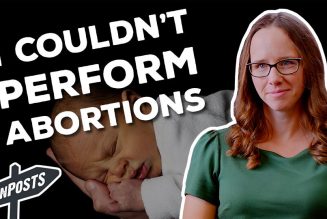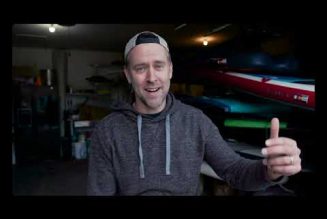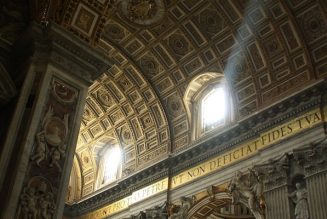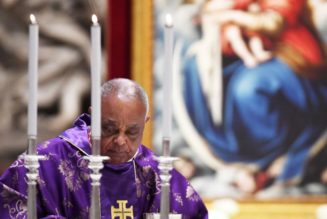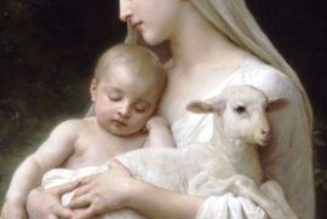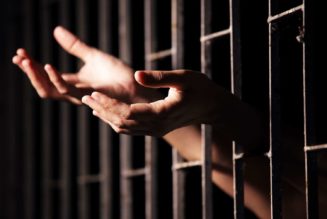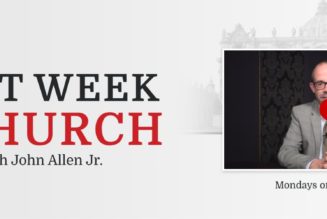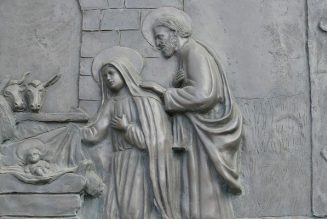
Imagine for a moment that you never knew Christ. Imagine that you grew up Jewish, still waiting for the Anointed One to come into the world. Imagine that even as a little child you were hoping and anticipating, as only a child can, for this holy arrival — thinking that any ring at the door might be news of his coming, or better yet, him — the One for whom you have so long been waiting. Imagine learning of how your grandparents waited, and their grandparents, all the way back to your distant ancestors in Egypt and the Promised Land. Imagine that there was never a time in your life when, at least in the back of your mind, you weren’t aware that the Messiah was yet to come.
Now imagine years later being inwardly drawn to consider that maybe, just maybe, the One for whom you’d been waiting all this time had already come. Not only had he come, but you could have a relationship with him. Imagine being told that he wasn’t just an Anointed Man, he was more. He was God. Imagine the shock, the holy shock.
If indeed the Anointed One had come, why hadn’t anyone you knew heard about it? After all, it was the Jewish Messiah for whom you’d been waiting. And, where was His kingdom? There seemed to be no evidence of it in the world today. If he had come, why did he leave? What was the point? And you’d never heard that he was to be God — no, only the Anointed One. These questions are those of the former Rosalind Moss, today Mother Miriam of the Lamb of God, foundress of the Daughters of Mary, Mother of Israel’s Hope.
In her early years, Rosalind grew up in a conservative Jewish home in Brooklyn. “Conservative” describes a particular branch of the Jewish faith, as opposed to the stricter “orthodox” or the more lax “reform.” And although Rosalind never missed the Jewish high holy days, by her teen years both she and her brother had drifted from the devoutness of their youth. By the time they left home, her brother was atheist and she was agnostic.
She remarked, “There was a hole in my heart which widened as I grew older. Even understanding that we were God’s chosen people didn’t help me understand where man was going and why. What was man’s purpose on earth? What was my purpose?”
When she was 32, Rosalind’s brother, David, read an article about Messianic Jews — Jews who believed that Jesus Christ was the Messiah. Neither David nor Rosalind had heard of anything so “absolutely insane” in their lives.
Less than three months later, with curiosity about the Messianic Jewish movement tucked in the back of her mind, Rosalind moved to California. At the time, she had everything the world says will make us happy: — money, a successful career and an active social life. But deep inside, there was still that hole in her heart.
Soon after arriving, Rosalind saw “a bearded hippie-looking man” wearing a T-shirt with “Jews for Jesus” in bold letters. “Here was a living specimen of the people in the article,” thought Rosalind. “I couldn’t believe these people actually existed and I went to talk with them. The man handed me a little tract that said, ‘If being born hasn’t given you much satisfaction, try being born again.’ I didn’t want to admit it but those words struck my heart.”
Although deciding that these “Jews for Jesus” were quirky and had problems, Rosalind nonetheless decided to attend their Bible study. “I went mostly to mock them,” she admitted. But instead, she noted, “I was sick to my stomach seeing Jews teaching and singing about Jesus Christ. But here again there was something that gripped my heart. They told me two things — that God existed and we can know it, and that we can know him.”
She understood “knowing him” in the sense of having a relationship with God and found this mind-boggling. She wanted to learn more. So, despite their odd ways, Rosalind continued to ask probing questions, debating and struggling with what they told her.
“For a Jewish person to believe that a man is God is a crime punishable by death,” explained Mother Miriam. “This is evident in the New Testament because any time Jesus claims divinity, the Jews are ready to run him out of town or stone him. Even though they await the Anointed One, they do not expect this person to actually be God and to claim such would be pure blasphemy to the Jewish mind, even today. A Jew knew you could not look on God and live.”
Then in 1976, in one life-changing evening with these Jewish evangelical Christians, Rosalind understood for the first time that the entire Old Testament sacrificial system, including thousands upon thousands of lambs slain, pointed to Jesus Christ, the Lamb of God who takes away the sin of the world. And it dawned on her that God could do anything he wanted. It didn’t make sense to her that a man could be God, but there wasn’t anything wrong with God deciding to become a man. This freed her to surrender her entire heart to knowing, loving and serving God through his Son, Jesus Christ.
For 14 years, Rosalind grew in her evangelical Christian faith. She studied at a theological seminary in Southern California and served as a chaplain for a nearby women’s jail facility. In 1990, Rosalind accepted a position at a well-respected Protestant church as director of women’s ministries.
Meanwhile, Rosalind’s atheist brother had become Catholic three years after reading the article about Jews who believed in Christ. In sharp contrast, 14 years of Christian interior growth included, for Rosalind, actively trying to get Catholics out of what she innocently perceived to be a false religious system leading millions astray. You can imagine the animated phone conversations and visits these two deeply devoted siblings shared over the years, given their different beliefs.
Like St. Paul persecuting the early Christians, Rosalind thought she was doing God’s will in getting Catholics to leave their Church. But, also like St. Paul, God had other plans for her.
In the midst of her preparation and move to take on her ministry position, David gave her the Catholic Answers apologetics magazine, This Rock.
Rosalind was intrigued. First, she respected any attempt to defend a belief system, no matter how misguided she might perceive it to be, and second, she had never met any Catholic who could defend the Catholic Faith. “What defense could the Catholic Church possibly give for its existence?” she wondered.
The magazine had an advertisement that read “Presbyterian Minister Becomes Catholic” and offered a four-tape series featuring Scott Hahn. Rosalind ordered the tapes.
“At the end of the tape series, as I was packing up my kitchen to go to my new church assignment, I listened as Scott Hahn summarized 2,000 years of Church history and then said that ‘for one who would look into the claims of the Catholic Church; to that one would come a holy shock and glorious amazement to find out that that which he’d been fighting and trying to save people from was the true Church founded by Christ.’ And holy shock perfectly describes what went through me at that time. I was paralyzed by the thought that there could be any truth to the Catholic Church.”
And so began Rosalind’s quiet, behind-the-scenes search for more answers. She privately spent every spare moment reading and researching until, two years later, she could no longer stay in her position in California. She left for New York where she could pursue her investigation of the Catholic Church uninterrupted.
“As Fulton Sheen said a generation ago, there aren’t 100 people in America who hate the Catholic Church, but there are millions who hate what they mistakenly think the Catholic Church teaches,” said Mother Miriam. “I first got hold of every anti-Catholic book I could find because I wanted to be saved from being deceived and from ever becoming Catholic. At the same time, I was learning what the Church taught from official Church teachings and the writings of the Church Fathers. It was just as Fulton Sheen said.” Rosalind was disappointed to learn that the anti-Catholic rhetoric did not address what the Church actually taught.
Compelled by what she was learning, drawn almost against her will to embrace the Catholic Church, it was Father James O’Connor, author of The Hidden Manna, who helped her overcome her last obstacle.
“If the sacrifice of Christ was sufficient,” she reasoned, “how could we add to it? Yet, at Mass, Catholics are asked to offer themselves with Christ.” Father O’Connor explained that indeed we do add to the sacrifice of Christ, but not because his sacrifice was insufficient. Christ’s sacrifice was sufficient and he does not need ours. But love receives. He who loves us, he who is Love and doesn’t need us, allows us to enter into his sacrifice even after we put him to death.
It not only made sense, but the thought of such love consumed her and led her at last to enter the Catholic Church.
At the Easter Vigil, 1995, Rosalind Moss received Jesus Christ, the Jewish Messiah, for the first time in Holy Communion — his body, blood, soul and divinity were now hers in a sacramental way. A few years later she declared, “God has done a transforming work in me. In every way I’ve entered into a whole new way of seeing life.”
In a sense, Rosalind experienced the ultimate Easter. She came full circle in her beliefs. Growing up, she celebrated the Passover, recalling when the Israelites would sacrifice a spotless lamb whose blood sprinkled on the lintels of the doorposts in Egypt spared the lives of the firstborn as the Angel of Death passed over their homes that night. But every lamb slain ultimately pointed to him, the Lamb of God, whose blood would not only take away the sin of the firstborn, but of everyone ever born through all time — the spotless Lamb of God who takes away the sin of the world.
The ultimate Easter is Christ, our Paschal Lamb, sacrificed for us. It is the Resurrection of the Passover Lamb. What was hoped for in her youth and symbolized by Rosalind’s non-Catholic Christian years was now realized in the Catholic Church as she received him, the very Lamb of God, not only at Easter but daily through the Holy Sacrifice of the Mass.
“What’s on my heart to say,” added Mother Miriam, “is that there is nothing more that we could have on earth than what God has given in giving us his Son and his Church. I don’t know anything that could please the heart of God more than that his Catholic people know their faith thoroughly — tradition and Scripture both. Because in knowing their faith, they will know him, and in knowing him will be able to bring Christ and the reality of his life to a dying world which so desperately needs the Savior.”
Rosalind worked on the staff of Catholic Answers in San Diego for nine years before leaving to found her religious congregation, Daughters of Mary, Mother of Israel’s Hope in 2008, and taking on the religious name Mother Miriam. The community is located in the Diocese of Salina, Kansas. In conjunction with Catholic Answers, for 12 years she was a guest of the Catholic radio program From the Heart, and in 2015 began a new radio program called Heart to Heart with Mother Miriam — now called Mother Miriam Live.
Join Our Telegram Group : Salvation & Prosperity

